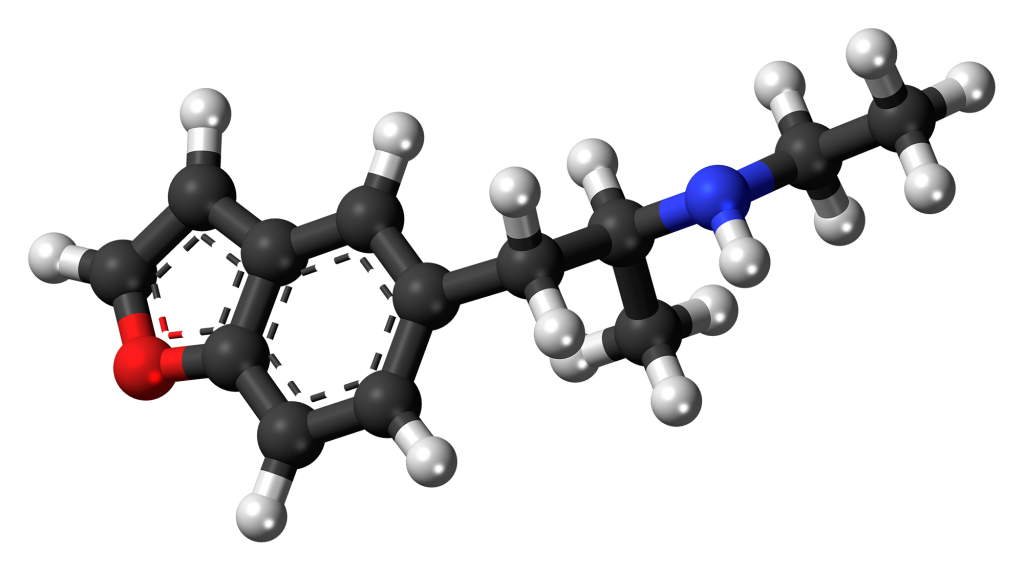Beautiful Plants For Your Interior
Summary
5-EAPB (1-(benzofuran-5-yl)-N-ethylpropan-2-amine) is a chemical compound that falls into the category of potentially entactogenic amphetamines. Structurally, it shares similarities with substances like 5-MAPB and 5-APB. While it may be anticipated to exhibit effects akin to these drugs in humans, the pharmacology of 5-EAPB remains unexplored mainly as of 2020.
In terms of structural resemblance, 5-EAPB bears a likeness to compounds such as 5-APB, which are claimed to act as agonists of the 5-HT2C receptor and function as triple monoamine reuptake inhibitors. However, it’s important to note that 5-EAPB is not explicitly mentioned in this context, and the extent to which its activity mirrors that of 5-APB remains uncertain.
| Identifiers | |
|---|---|
| IUPAC name | |
| CAS Number | 1445566-01-7 |
|---|---|
| ChemSpider | 32078888 |
| UNII | 889D8VM2SL |
| CompTox Dashboard (EPA) | DTXSID701010104 |
| Chemical and physical data | |
| Formula | C13H17NO |
| Molar mass | 203.28 g/mol (freebase) 239.78 g/mol (hydrochloride) g·mol−1 |

Legality
In the United Kingdom, all benzofuran compounds, including 5-EAPB, fall under the classification of Class B drugs, rendering them illegal.
Similarly, 5-EAPB is categorized within the Fifth Schedule of the Misuse of Drugs Act (MDA) in Singapore, making it illegal in the country as of May 2015.
Adverse reactions and deaths
During the Brownstock music festival in Essex, UK, on August 31, 2013, three individuals in their thirties were hospitalized. They had each consumed approximately 500 mg of 5-EAPB. Tragically, one of them passed away while in the hospital.

FAQ
- What is 5-EAPB?
- 5-EAPB, or 1-(benzofuran-5-yl)-N-ethylpropan-2-amine, is a chemical compound that falls within the category of potentially entactogenic amphetamines.
- What are the potential effects of 5-EAPB?
- The specific effects of 5-EAPB are not well-documented, as its pharmacology still needs to be explored. It is structurally related to substances like 5-MAPB and 5-APB and may be anticipated to exhibit similar effects in humans, but this has yet to be studied extensively.
- Is 5-EAPB legal?
- The legal status of 5-EAPB varies by country. In the UK, all benzofurans, including 5-EAPB, are classified as Class B drugs and are illegal. It is also illegal in Singapore, listed under the Misuse of Drugs Act (MDA).
- Are there any safety concerns associated with 5-EAPB?
- Due to the limited research on 5-EAPB, its safety profile needs to be better understood. As with any psychoactive substance, the potential risks and safety concerns are essential to consider. Always prioritize responsible use and adhere to local laws and regulations.
- Is there any known medical use for 5-EAPB?
- There is no recognized medical use for 5-EAPB, and it is primarily encountered in the context of recreational drug use.
- Where can I find more information about 5-EAPB?
- For more detailed information about 5-EAPB, it is advisable to consult scientific research, official government sources, and relevant publications. When seeking information about such substances, it is crucial to rely on reliable and authoritative sources.
References
- Anvisa (24 July 2023). “RDC Nº 804 – Listas de Substâncias Entorpecentes, Psicotrópicas, Precursoras e Outras sob Controle Especial” [Collegiate Board Resolution No. 804 – Lists of Narcotic, Psychotropic, Precursor, and Other Substances under Special Control] (in Brazilian Portuguese). Diário Oficial da União (published 25 July 2023). Archived from the original on 27 August 2023. Retrieved 27 August 2023.
- US patent 7045545, Briner K, Burkhart P, Burkholder P, Fisher MJ, Gritton WH, Kohlman DT, Liang SX, Miller SC, Mullaney JT, Xu YX, “Aminoalkylbenzofurans as serotonin (5-HT(2c)) agonists”, published 2000-01-19, issued 2006-16-03, assigned to Eli Lilly and Co.
- “Ban on NBOMe and benzofurans comes into force”. Gov.uk. 10 June 2014.
- “CNB NEWS RELEASE”. Central Narcotics Bureau (CNB). 30 April 2015. Archived from the original on 15 July 2015. Retrieved 24 July 2015.
- Stretch E (1 September 2013). “Festivalgoer’s death prompts drug warning”. The Guardian.